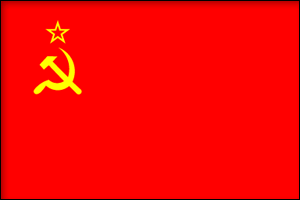The 72d Infantry Regiment, 23d Infantry Division, approaching Nomonhan in early July.
Battle of Khalkhin Gol (1939)
Battle of Khalkhin Gol (May-September, 1939)--also known as the Nomonhan Incident. Very large and bloody battle (Soviet casualties: at least 7,974 killed and 15,251 wounded. Japanese casualties: 8,440 killed, with 8,766 wounded.) Some historians consider this battle very significant given that Stalin now knew his troops could handle the Japanese, and the Soviet victory at Khalkhin Gol ensured that Japan would not intervene when the Soviet Union joined the new European war in Poland on September 17, 1939.
In August and September 1939, one of the last prequels to World War Two as a truly global war entered its last phase.
From May 1939, Soviet and Japanese forces engaged in a major battle on the steppes of Mongolia. The end of this battle began on August 20, 1939, as Soviet forces under the command of General Georgy Zhukov began the offensive that would defeat the Japanese, and end the months-long Battle of Khalkhin Gol/Nomonhan that pitted huge numbers of Japanese forces against the combined forces of Communist allies, the Soviet Union, and Mongolia.
The Japanese planned a third major offensive against the Soviets to begin on August 24. Zhukov plan to attack the Japanese first gave him the advantage, and neutralized the Japanese plan. Zhukov massed a large armored force of three tank brigades (the 4th, 6th and 11th), and two mechanized brigades (7th and 8th, which were armoured car units with attached infantry support). All told, General Zhukov would use three rifle divisions, two tank divisions, two additional tank brigades (498 tanks and 250 fighterplanes with bomber support) in the coming battle. The Mongolians (on whose territory the fighting took place) added two cavalry divisions. Japan’s Kwantung Army, could only match this Communist army with two lightly armored divisions at the point of attack, centered around Lieutenant General Michitaro Komatsubara’s 23rd Division. Japanese military intelligence failed to understand the sizeof the Soviet buildup or the full scope of Zhukov attack plan.
Zhukov sent 50,000 Soviet and Mongolian troops of the 57th Special Corps to the east bank of the Khalkhyn Gol river, then sent his main force (three infantry divisions, massed artillery, a tank brigade, and the best planes of the Soviet Air Force) across the river on August 20, 1939, to attack the Japanese forces. After the Japanesearmy was pinned down by the attack of the Soviet main force, the armoured forces already on the east bank moved around the flanks of the Japanese position and attacked the Kwantung Army in the rear, cutting lines of communication. This resulted a classic double envelopment of the Japanese position by the Soviet and Mongolian forces. When the two wings of Zhukov’s attack linked up at Nomonhan village on August 25, the Japanese 23rd division was trapped. On August 26, a Japanese attack to relieve the 23rd division failed. On August 27, the last attempt to break out of the encirclement also failed. The Japanese, surrounded by the Soviets, refused to surrender. The Soviets destroyed the remaining Japanese troops with artillery and air attacks. The battle ended on August 31, 1939 with the complete destruction of the Japanese forces. Remaining Japanese units retreated to east of Nomonhan, and re-entered Japanese-occupied Manchuria (which is part of China, with whom Japan was already at war).
Links and Resources on the Battle of Khalkhin Gol:
Kohn, George C. Dictionary of Wars. New York: Facts On File Publications. 1986.
Japan v. Russia, 1939 (part 1)--
Nomonhan: Japanese-Soviet Tactical Combat; 1939--Combined Arms Research Library
Battle of Khalkhin Gol/Nomonhan Incident: 11 May 1939 - 27 Aug 1939--World War Two Database
Copyright © 1998-2014 Roger A. Lee and History Guy Media; Last Modified: 11.22.14"The History Guy" is a Registered Trademark.
Historyguy.com Search Engine
Trending on Historyguy.com Now:


